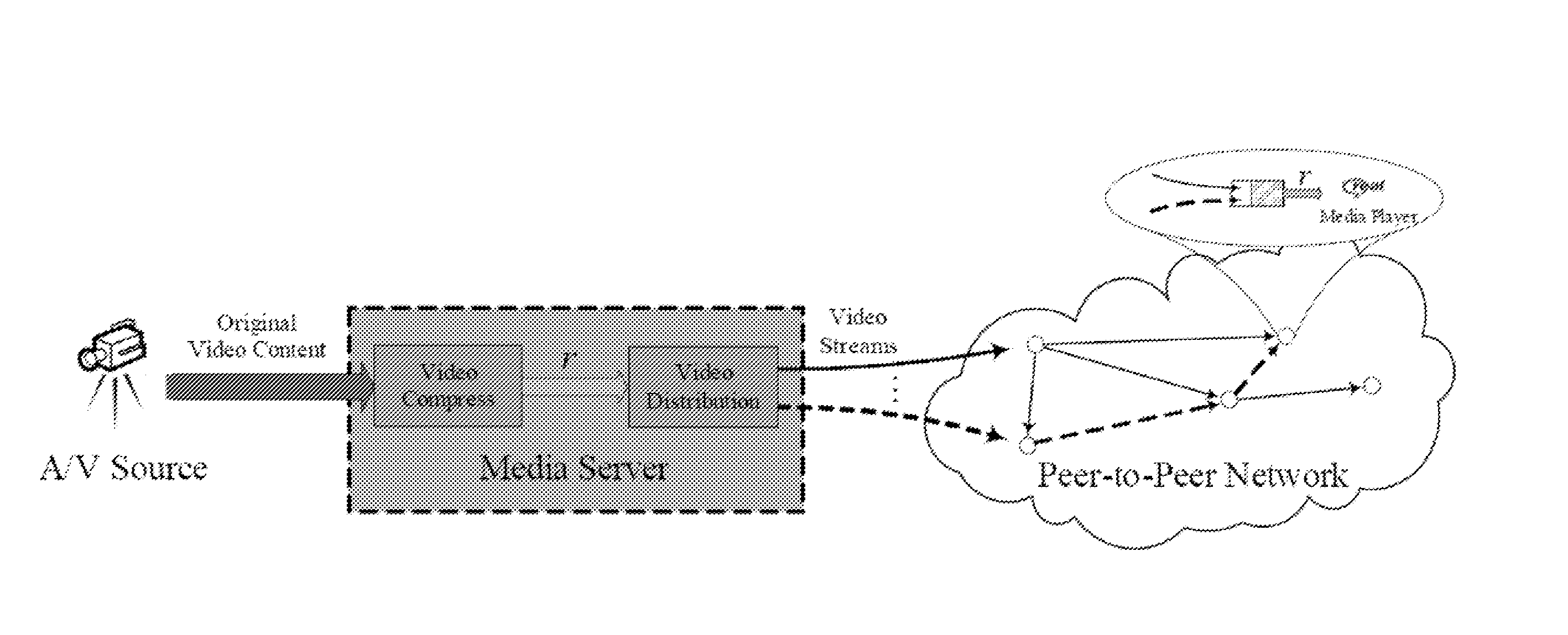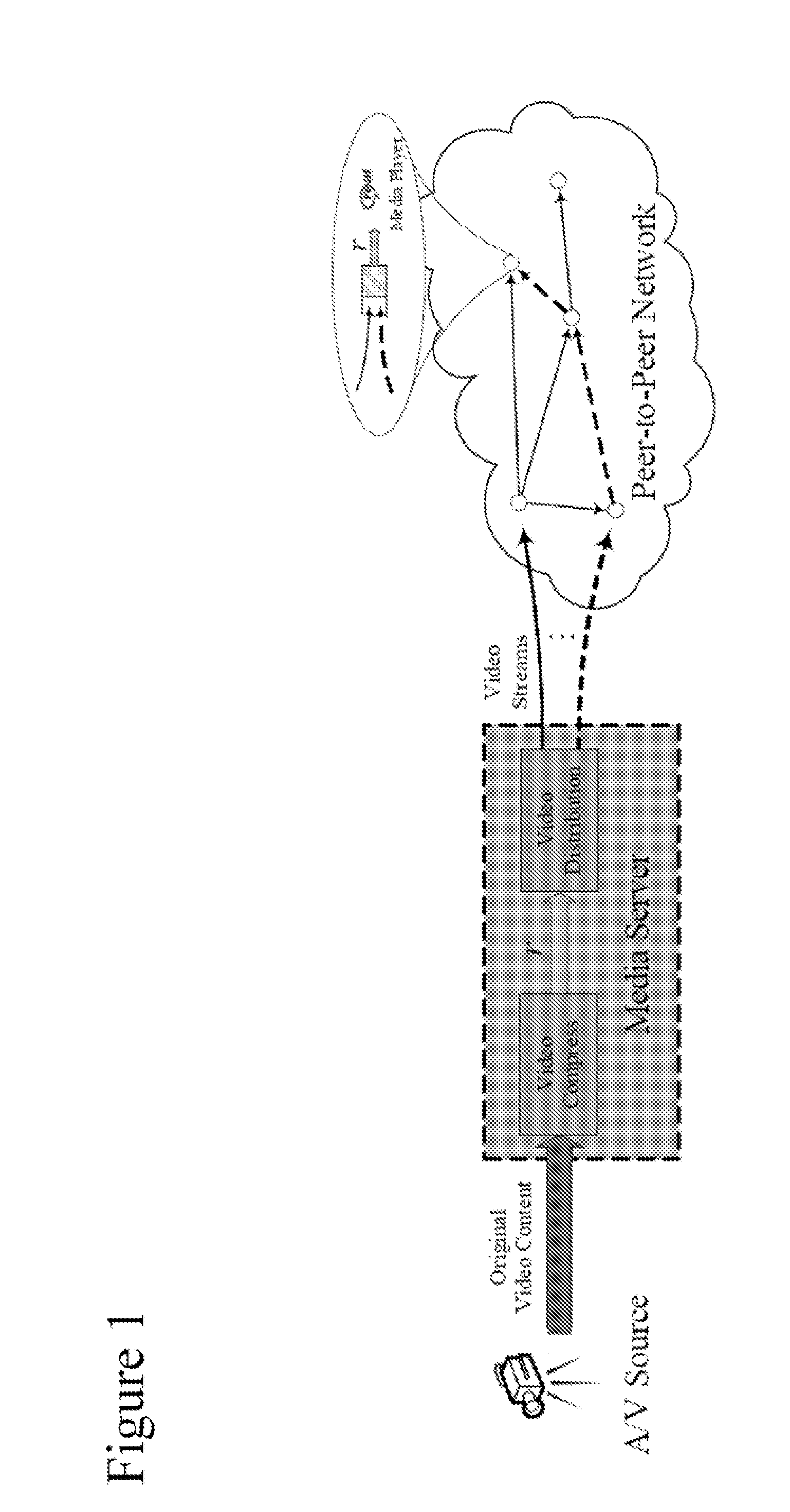Intelligent peer-to-peer media streaming
a peer-to-peer media and intelligent technology, applied in the field of peer-to-peer media streaming, can solve the problems of high service quality, high bandwidth consumption, and difficult network structure to boost system performance with high service quality, and achieve the effect of satisfying the downloading rate, eliminating bottleneck effects of video streaming, and playing smoothly
- Summary
- Abstract
- Description
- Claims
- Application Information
AI Technical Summary
Benefits of technology
Problems solved by technology
Method used
Image
Examples
Embodiment Construction
[0025]The numerous innovative teachings of the present application will be described with particular reference to the presently preferred embodiment (by way of example, and not of limitation).
[0026]To address unpredictable and dynamically changing overall bandwidth problem, the proposed approach dynamically adapts the playout rate in tune with the changes of ΣiεVtCi. Specifically, the preferred embodiment makes the playout rate r as a function of time denoted by rt, and enables the media source to adoptively control it based on the overall bandwidth resource such that at any time snapshot t, ΣiεVtCt≈(|Vt|−1)rt. Consequently, if the overall bandwidth is not plenty to support all the users with current playout rate, the media server will decrease the playout rate rt by further compressing the video content. On the other hand, if the overall bandwidth is plenty, the media server will generate high quality video streams with a higher playout rate rt so that all the peers will benefit fr...
PUM
 Login to View More
Login to View More Abstract
Description
Claims
Application Information
 Login to View More
Login to View More - R&D
- Intellectual Property
- Life Sciences
- Materials
- Tech Scout
- Unparalleled Data Quality
- Higher Quality Content
- 60% Fewer Hallucinations
Browse by: Latest US Patents, China's latest patents, Technical Efficacy Thesaurus, Application Domain, Technology Topic, Popular Technical Reports.
© 2025 PatSnap. All rights reserved.Legal|Privacy policy|Modern Slavery Act Transparency Statement|Sitemap|About US| Contact US: help@patsnap.com



